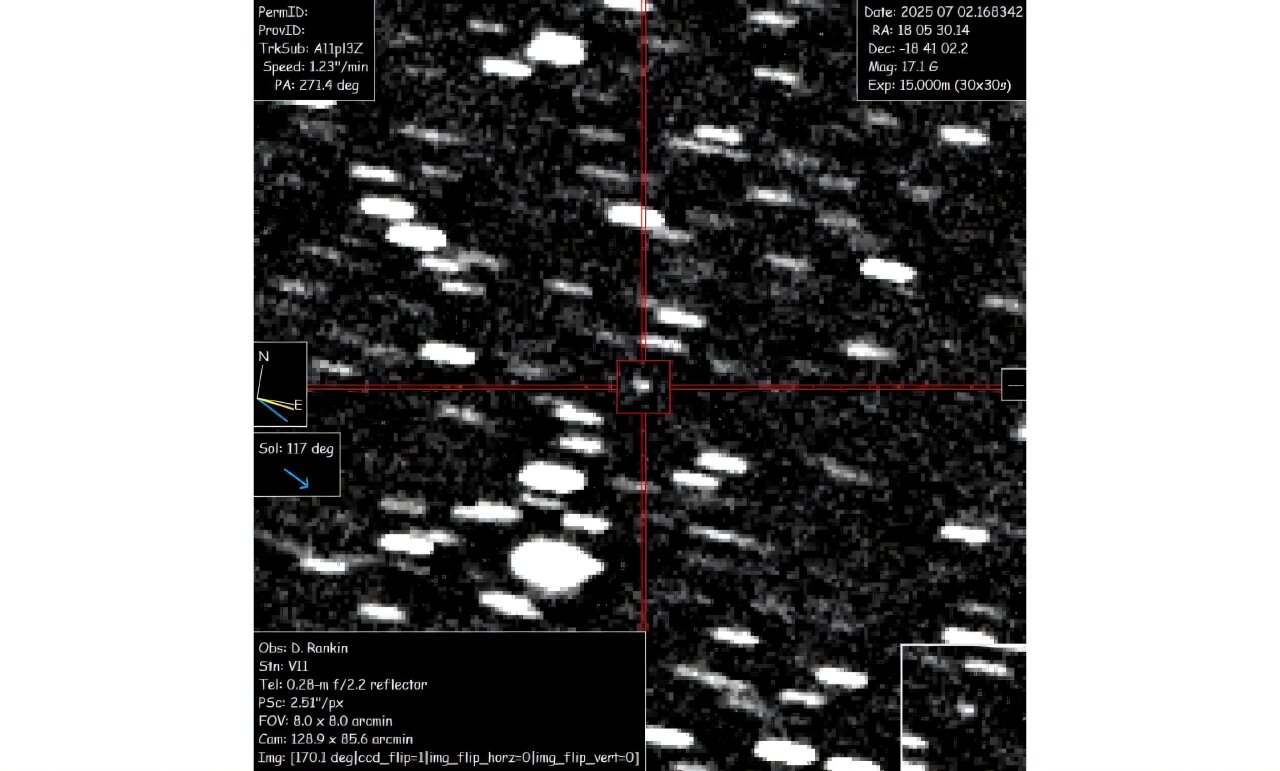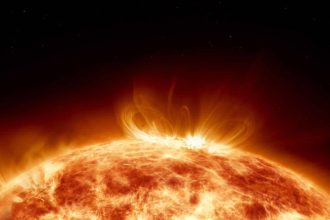On Wednesday, astronomers officially announced the confirmation of an interstellar object speeding through our solar system, marking only the third such discovery in history. The object, designated 3I/Atlas, is believed to be the largest interstellar visitor detected thus far and has been classified as a comet.
David Rankin from the Saguaro Observatory captured an image of 3I/Atlas on June 2, 2025, while working with the Catalina Sky Survey at the University of Arizona. Peter Veres, an astronomer with the International Astronomical Union’s Minor Planet Center, noted, “It looks kind of fuzzy. It seems that there is some gas around it, and I think one or two telescopes reported a very short tail.”
Despite its daunting journey, 3I/Atlas poses no threat to Earth. Richard Moissl, head of planetary defense at the European Space Agency, reassured that the object will fly safely within the orbit of Mars. He stated, “It will fly deep through the solar system, passing just inside the orbit of Mars,” assuring that it won’t collide with the planet.
According to current calculations, the object is traveling at an impressive speed of over 60 kilometers (37 miles) per second, indicating that it is not bound by the sun’s gravity like other solar system objects. Moissl explained, “Its trajectory means it’s not orbiting our star, but coming from interstellar space and flying off to there again.”
Astronomer Jonathan McDowell from the Harvard-Smithsonian Center for Astrophysics commented on the formation of such objects, saying, “We think that probably these little ice balls get formed associated with star systems. And then as another star passes by, tugs on the ice ball, frees it out. It goes rogue, wanders through the galaxy, and now this one is just passing us.”
The discovery originated from a Chile-based observatory participating in the NASA-funded ATLAS survey. Astronomers, both professional and amateur, have since sifted through historical telescope data, tracing the object’s trajectory back to at least June 14. Moissl indicated that the object is estimated to be between 10-20 kilometers wide, potentially making it the largest interstellar object recorded. However, its size may vary if it is primarily composed of ice, as this material reflects more light.
Veres added that as the object approaches the sun, it is expected to brighten and bend slightly due to gravitational pull, with its closest point—perihelion—predicted for October 29. Following this, it will continue to move outward, exiting the solar system over the next several years.
This sighting represents only the third occasion that humanity has detected an object originating from beyond our solar system. The first was ‘Oumuamua in 2017, whose unusual features led some scientists to hypothesize it could be of extraterrestrial origin, a notion that later research has challenged. The second, named 2I/Borisov, was identified in 2019.
While 3I/Atlas does not appear to have artificial origins, scientists are actively working to understand its shape, composition, and rotation. Mark Norris, an astronomer at the University of Central Lancashire, noted that this object seems to be traveling significantly faster than its predecessors. He also mentioned a modeling estimate suggesting that there could be up to 10,000 interstellar objects drifting through the solar system at any time, most of which would be smaller than 3I/Atlas. This insight raises the prospect of the newly operational Vera C. Rubin Observatory in Chile discovering these faint visitors on a monthly basis.
Though intercepting 3I/Atlas with a space mission is currently impractical, these encounters provide a valuable opportunity for scientists to study materials from outside our solar system. Norris emphasized that discovering precursors to life, like amino acids, on such objects would enhance our understanding of the potential for life in other star systems.












